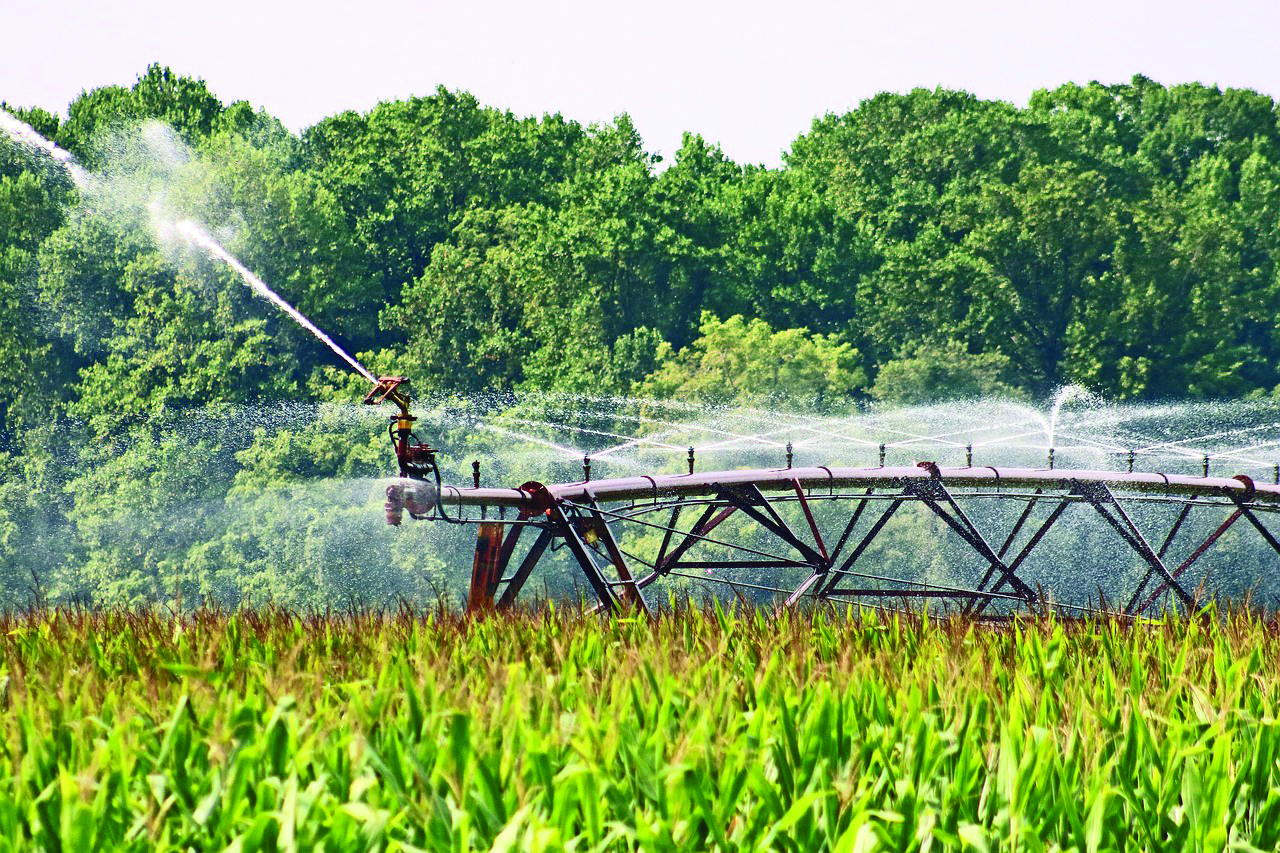Lifeline for Farms
There is a pressing need for scientific irrigation practices and incorporation of modern technologies in agriculture to combat climate-induced water stress, ensure food security, and break the vicious cycle of emissions and agricultural distress

In the previous article, we discussed the importance of soil conservation and regeneration as an adaptation measure. The issue of water management was also touched upon. In this article, we shall dwell upon the importance of proper irrigation practices in greater detail, in the light of the adverse effects of climate change.
Irrigation: A Critical Input for Agriculture
Since time immemorial, farms have been irrigated from rivers or rainfall. Even today, irrigation continues to be a critical input for farming and agriculture. Paul Hawken, in his book Drawdown, mentions that agriculture and irrigation consume 70 per cent of the world’s freshwater resources, and 40 per cent of world food production depends on irrigation.
This source of water for irrigation will face severe strain in coming years in the wake of longer heatwaves and onset of drought conditions. On the other hand, many parts of the world have seen increasingly skewed distribution of rainfall, which has led to high levels of precipitation, bunched together in fewer days—leading to extreme soil erosion. Both the events pose a challenge for irrigation: the challenge of higher evapotranspiration in the drought-like times and harm to the crops because of water logging and soil erosion in flood-like times. To add to this, excessive tapping of water resources because of faulty pricing of water has put the availability of surface water and ground water in jeopardy, even in normal times. Extreme weather events like longer heatwaves and highly skewed rainfall distribution set up a vicious cycle—for example, high carbon emissions lead to longer heatwaves, in turn leading to higher evapotranspiration and greater requirement for water, which is in short supply. This ultimately leads to death of plants, resulting in more carbon emissions.
Because of the climate hazards discussed above, irrigation planning has to shift to a new paradigm, which takes into account the unpredictability of the weather. To address drought-like times, precise techniques such as drip and sprinkler irrigation have to be used at a broader scale. Not only are these more precise, they also economize on the use of water and make irrigation more productive overall. In flood-like times, the use of rainwater harvesting and the building of check dams to store runoff water, terracing and contouring, are measures that will prevent soil erosion.
In addition to the measures highlighted above, it makes sense to use available technologies to the maximum extent. Irrigation plans have to be drawn up based on: the weather forecasts, the soil water content which can be measured in real time with the help of soil sensors, the type of crop or plant etc. Further, irrigation scheduling is a good way to ensure that crops and plants get the right amount of water at the right time. This is because crops and plants don’t require uniform amounts of water at all times—the requirement differs at various stages of their growth.
While the technologies discussed above are now easily available, they involve high capital costs. As a result, their uptake has been more in the richer Western countries, such as the USA, Australia, New Zealand and the European countries. Some developing countries, such as South Africa, Israel and India, have seen the adoption of better technologies such as drip and sprinkler systems. In particular, the ‘Per Drop More Crop” (PDMC) scheme, promoted by the Government of India, encourages water-saving irrigation techniques like drip and sprinkler irrigation. However, other developing countries continue to depend on rainfall, and even the traditional irrigation structures such as canals and deep tube wells are not uniformly spread. While the cost of new technologies is falling and governments in Asia and Africa allocate substantial amounts for modern irrigation, much remains to be done in the adoption of the latest technologies.
Conclusion
More scientific irrigation, with better technologies, is necessary to soften the adverse impacts of climate change. Along with the soil conservation and generation measures discussed in the previous article, new technologies in irrigation will not only conserve water but also prevent carbon emissions.
The writer is Additional Chief Secretary, Department of Cooperation, Government of West Bengal



